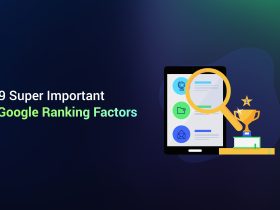When you redesign your website, its outcome can be both positive and negative. Of course, no one would want to break their website experience or see the conversion rate drop, but unfortunately, it can happen.
By redesigning your website, you can improve its overall experience, which will help boost visitor engagement and the conversion rate. But, a website redesign can also put your organic traffic at risk. It all depends on how you do it.
Therefore, we decided to compile and share some essential SEO guidelines to follow when giving your website a make-over.
Examining your website’s current performance
First, you need to analyze your website’s current performance; by that, we mean everything. Analyze the traffic, how people use your website, the user journey, how they interact with your website, and much more.
For this purpose, a heatmap can offer you the data you need, which indicates what metric is currently working fine and which one needs improvement.
Analyzing and benchmarking your website’s existing states will offer you an overview of performance from both a holistic and concentrated view. This is important because every web page differs from each other based on redesign risk, and some might even as well be deleted.
What are your website’s SEO goals?
Once you clearly understand your website’s current performance, it’s time to decide on the redesign goal, primarily how it will support your SEO goals.
You need to determine the primary purpose of the redesign, the sub-goals, and how you want to improve.
Some SEO goals could include:
- Improve Keyword Rankings
- Increase Organic Traffic
- Increase Page Duration
- Increase Page Sessions
- Increase Conversion
When you have clearly defined your goals, it will be much easier for you to achieve a successful SEO redesign. Just make sure that your goals are achievable and have realistic scope.
Optimize existing content and do outreach
According to the leading SEO services in Pakistan, optimizing your website’s existing and new content based on keyword analysis and search intent is one of the most effective ways to achieve your SEO-based redesign goals.
You must create and publish user-friendly content on the top-ranking keywords associated with your niche. Don’t forget to optimize your web pages’ titles, headings, meta descriptions, URLs, images, and the main body content.
Outreaching to relevant websites for link-building purposes is also crucial for better SEO performance. Link-building works like PR did in the old times – by building strong business relationships with other websites. Keep them updated, keep them in the loop, and reach out whenever relevant.
Run an audit and set up redirects
By running a content audit of your content, you can identify the content with low value or the ones that are just draining your crawl budget. This content may not be worth updating, and removing or redirecting these pages would be best.
If your website has external or internal backlinks pointing at them, you should redirect them and not remove them. Removing these sites would create broken 404-links, which are unsuitable for your technical performance.
Remember these guidelines if you want search engine crawlers to find your content after completing the redesign process.
Update your site structure and split test
After optimizing the website’s content, it’s time to focus on the overall website structure. First, update your website structure to make it easy for users and crawlers to understand.
Optimizing your website’s header and footer with the most important pages, such as products/services, about us page, blog, contact, privacy policy, etc., is also included in the website structure update process.
Underestimating the importance of page speed for an enhanced user experience would be a mistake. Google has introduced a new report in Google Search Console called the “Core Web Vitals” report that focuses on optimizing page speed and overall experience.
Update the sitemap
Updating your sitemap alongside the redesign helps Google and users understand the new website immediately.
You’ll have to submit your updated sitemap to Google when the new website is up and running. A sitemap is your website’s floor plan, which lists all the essential web page URLs for search engines to understand.
Stage your plan of attack
SEO is like a living organism; you must keep it alive by feeding it daily. Blindly redesigning your website might risk several months or years of work.
Several tools help you minimize those risks, such as redirection, content optimization, site structure, and sitemaps that help your redesign achieve your desired SEO goals.
So what should be your next step? First, create an action plan, including timelines, key projects, and individual accountability. You can also use online whiteboards to brainstorm action plan ideas with your teammates. Next, understand who is responsible, what collaboration needs, and how everyone impacts performance and timeliness.
Once your new design is up and running, get back to web analytics tools and measure user behavior, conversion rate, and form efficiency to collect valuable insights.











Leave a Reply